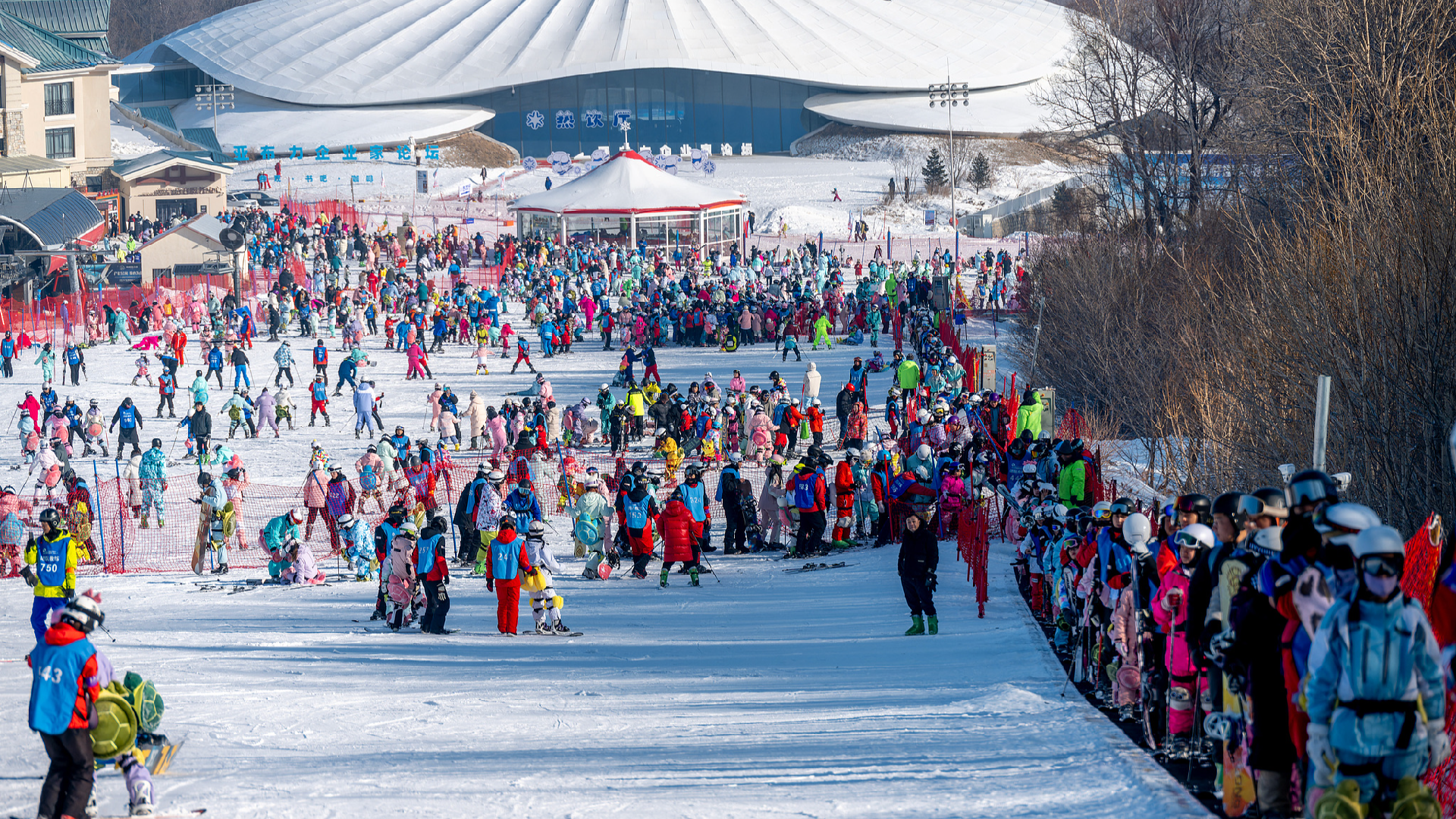Tapping into the Industrial Benefits of Northeast China
Northeast China has the potential to fully leverage its ecological assets, harness its ice and snow resources, and energetically advance the ice and snow economy. This approach aims to unlock the region's industrial benefits and swiftly achieve the revitalization strategy for northeast China.

A meeting in September 2023 emphasized the urgent need to enhance ecological resource conservation and utilization in northeast China. It was stated that "it is imperative to intensify the conservation and utilization of ecological resources, and make full use of the region's advantages in ecological environment and biological resources, so as to develop modern biology, big data and other emerging industries with characteristics, and boost the development of the ice and snow economy and the marine economy." Consequently, northeast China must harness its ecological assets and focus on its ice and snow resources to develop the ice and snow economy, thereby unlocking industrial dividends and expediting the region's revitalization strategy.
The revitalization of northeast China will depend significantly on emerging industries, with the ice and snow economy poised to become a pivotal driver of economic growth. Known as the "eldest son of the People's Republic of China," northeast China was instrumental in national construction in the early years after its founding due to its abundant resources. However, since the reform and opening-up in the early 1980s, especially post-China's WTO accession in 2001, the region has struggled to capitalize on the strategic opportunities of globalization and has faced declining growth compared to the coastal provinces. Among the newer industries, the ice and snow economy stands out as one that the country has promoted in recent years, yet it has not been fully developed. Capturing the strategic possibilities of the ice and snow economy and establishing a new economic engine is essential for the revitalization of northeast China.
Northeast China's ecological wealth and ice and snow resources provide it with unique advantages for developing the ice and snow economy, which has specific demands for natural resources. Its geographic attributes—including a high latitude, low winter temperatures, superior snow quality, and extended snow seasons—make it well-suited for ice and snow sports and tourism. For instance, Harbin is scheduled to host the 9th Asian Winter Games in 2025, serving as a major international ice and snow event following the Beijing 2022 Winter Olympics, which is expected to significantly promote ice and snow sports in the region.
Harbin, known as the "Ice City," is also recognized as the birthplace of Chinese ice and snow sculpture art. The city's unique winter atmosphere is shaped by its stunning ice sculptures, snow sculptures, ice buildings, and ice lanterns, which enhance its snow and ice tourism offerings. According to the Report on China's Ice and Snow Tourism Development, the 2023-2024 snow season witnessed a surge of 430 million ice and snow tourists in China, generating over 524.7 billion yuan in revenue. Looking ahead to the 2024-2025 snow season, projections suggest that the ice and snow leisure tourism sector could attract more than 520 million visitors and generate upwards of 630 billion yuan in revenue. By fully leveraging its ecological advantages and unlocking the potential of the ice and snow economy, northeast China can continuously generate industrial dividends that further support the region's revival.
Northeast China’s strong industrial base can facilitate the creation of a comprehensive ice and snow industrial chain in the area. Development in the snow economy must extend beyond mere tourism; it requires establishing a robust industrial ecosystem. The region can build a complete industrial chain centered around ice and snow facilities, anchored by ice and snow sports, with ice and snow tourism playing a significant role and the manufacturing of related equipment providing support.
On one hand, northeast China can vigorously promote ice and snow culture, enhance ice and snow sports, and boost tourism revenue through combined ice and snow tourism efforts. On the other hand, developing technologies and equipment for ice and snow activities, including sledges, skis, winter attire, and snowmobiles, will stimulate the growth of related manufacturing sectors.
Additionally, the region can explore the development potential of the ice and snow economy. For instance, constructing large data centers could lead to advancements in the digital economy, aided by the region's naturally low temperatures that would help with cooling and lower operational costs. The consistently cold climate also favors the cultivation of ginseng, breeding of rare fur-bearing animals, and the processing of specialty agricultural products, thereby broadening the agricultural industrial chain.
By integrating primary, secondary, and tertiary industries and constructing a full ice and snow industrial chain based on its resources, northeast China can enhance the role of emerging industries within its industrial framework, facilitate industrial transformation and upgrades, and ultimately contribute to the strategic goal of regional revitalization.
To effectively seize the strategic opportunities within the ice and snow economy and stimulate northeast China's revitalization through industrial development, the region should prioritize several key areas:
First, improving the region’s transportation infrastructure is crucial to enhance accessibility. The ice and snow economy is inherently consumer-oriented, yet northeast China faces significant isolation and transportation challenges. Expanding air routes and establishing direct high-speed rail connections will reduce travel time, lower transportation costs for tourists, and enhance the overall travel experience.
Second, northeast China should attract a diverse pool of talent to drive industrial and regional revitalization. Talent is critical for economic growth, yet the region has been hindered by a talent drain. Implementing favorable policies to draw skilled individuals from various sectors can mitigate the outflow of young talent and rejuvenate the local workforce.
Third, fostering collaboration with other regions on industrial development will help bridge the gap in the region's growth. While northeast China possesses distinct resources favorable for advancing the ice and snow economy, it also faces challenges such as a lack of vitality in emerging sectors. Strengthening industrial partnerships with the Beijing-Tianjin-Hebei region, the Yangtze River Delta, and the Pearl River Delta can invite investment, technology, and emerging industries, enriching the local market and optimizing the business environment. By nurturing internal growth drivers, these strategies will facilitate the revitalization of northeast China.
Allen M Lee contributed to this report for TROIB News
Find more stories on Business, Economy and Finance in TROIB business












